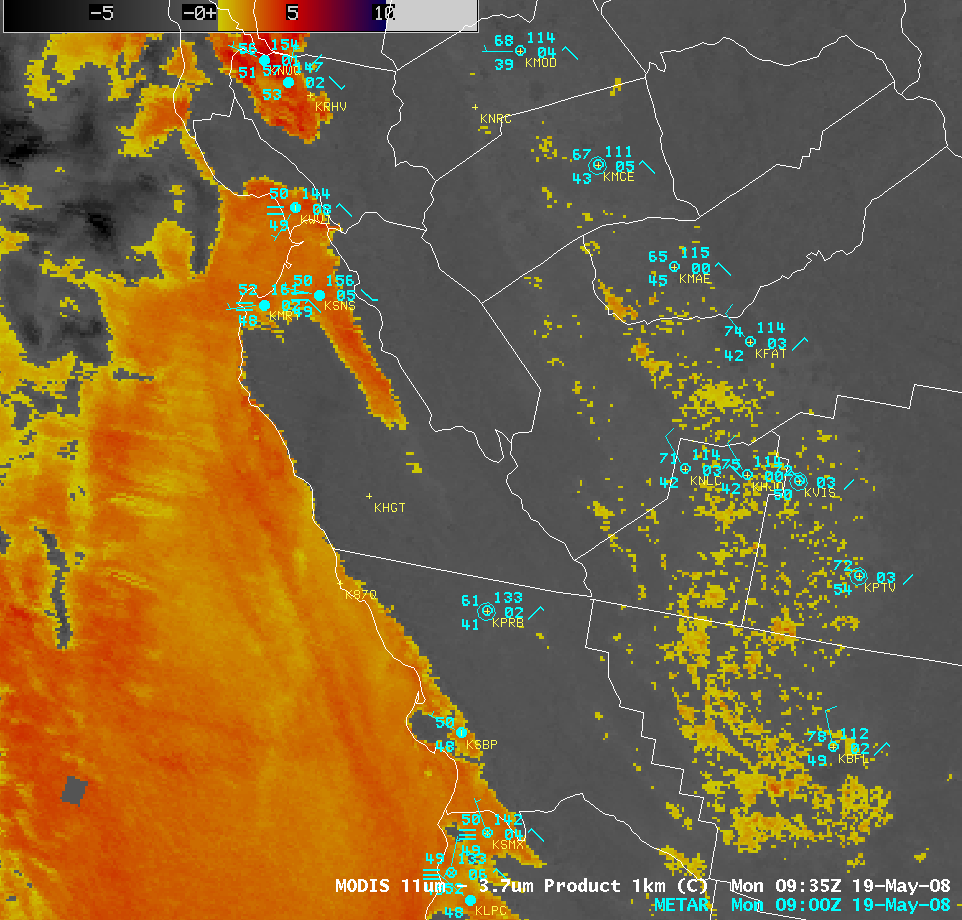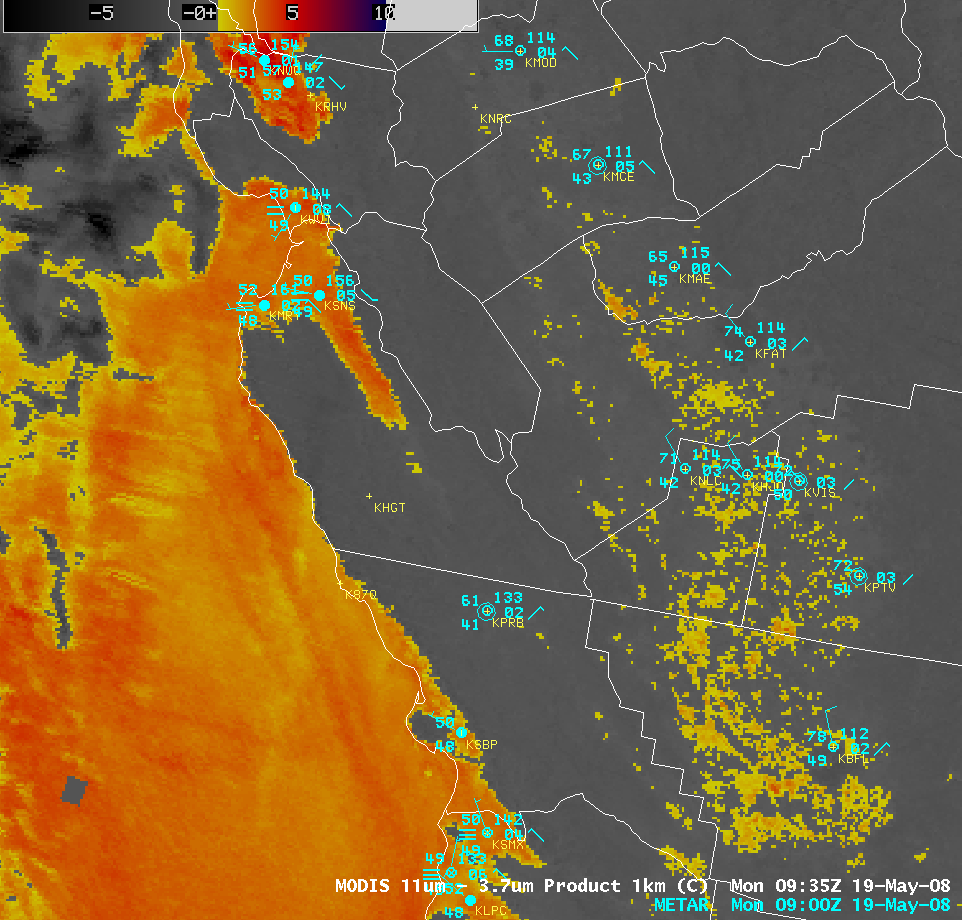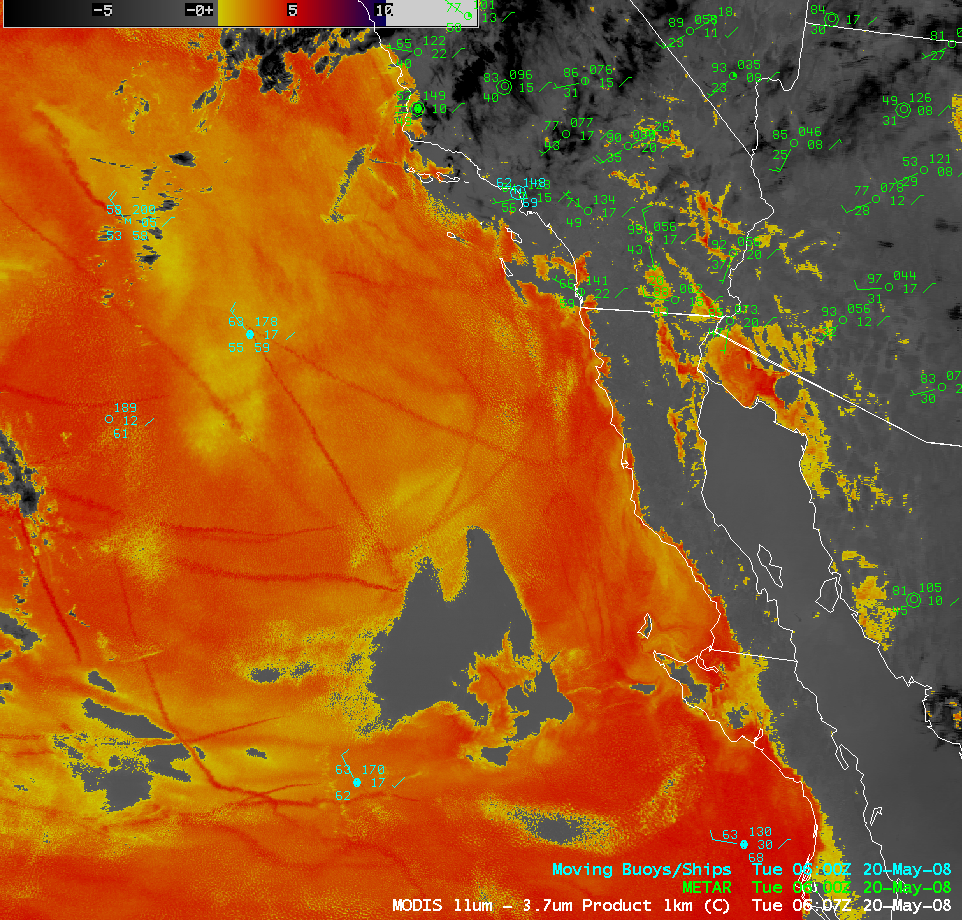Fog/stratus product: MODIS vs GOES
Comparisons of the 1-km resolution MODIS fog/stratus product with the 4-km resolution GOES fog/stratus product help to underscore the improved ability to detect subtle features using higher spatial resolution satellite data. AWIPS images of the MODIS and GOES-11 fog/stratus products (plus topography) covering the Monterey and Fresno, California regions on 19 May 2008 (above) showed a patch of fog over Monterey (KMRY), Watsonville (KWVI), and Salinas (KSNS), with a narrow finger of fog that extended southeastward into the Salinas River Valley.
Farther inland over central California, the MODIS fog/stratus product imagery revealed a noisy “false fog/stratus signal” over parts of the San Joaquin Valley, due to the high emissivity of desert soils that covered the non-agricultural portions of the valley (the contrasting patchwork of green agricultural fields versus brown to gray non-agricultural areas was very evident on 250-m resolution MODIS true color imagery from the previous day) — regions with a lower MODIS Normalized Difference Vegetation Index (NDVI) generally corresponded with regions that exhibited a more pronounced “false fog/stratus signal” (below).
Images centered off the coast of Southern California and Baja California on 20 May 2008 (below) revealed several ship tracks in the marine stratocumulus cloud deck that was offshore. Once again, such small-scale features showed up with greater clarity on the MODIS fog/stratus product imagery. These comparisons give a bit of a preview of the types of improved products that will be available using the Advanced Baseline Imager (ABI) instrument on the upcoming GOES-R satellite (scheduled to be launched in 2014), which will offer IR imagery and products at a 2-km spatial resolution (at 5-minute intervals on a routine basis).




